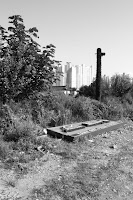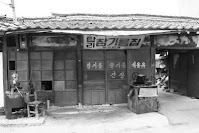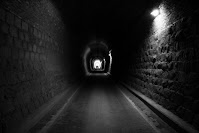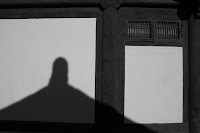In 1904, Japanese invaded the Korean Peninsula and some came to settle in the very small seashore village called 구룡포, 九龍浦, Guryongpo, located at the east end of the Korean peninsula. Guryongpo got its name from the legend of nine dragons that ascended into the sky over the waters off the coastal village. 구 Gu means 9, 룡 Ryong dragon and 포 Po harbor. The coastal waters off Guryongpo had a rich abundance of fishery resources. As the number of Japanese residents increased, they became richer and the village grew bigger. Lot of Japanese-style houses, a wharf facility and a park on a hill behind the village were newly built and shops including even a small department store were opened. The hill has still a wonderful view of the harbor.
As most of the Japanese buildings were made of wood, soil and cement, some houses that had been weathered the last century collapsed, and the others have been repaired and rebuilt since independence from Japan in 1945. So the original features have been changed gradually. But the Japanese traces of the colonial era could be still found in the alley. Recently an exhibition house for visitors including Japanese tourists has been opened, which used to be a typical Japanese house. The above photo shows a door with etched glass panels that is exhibited in the upstairs. The door is said to have been installed in the the other Japanese house nearby. Japanese tourists and descendants of the Japanese settlers during the colonial era are so glad to see the glass panels, the exhibition guide said. It was said that the figure etched on the upper left side depicts Mt. Fuji 富士山.
Old photos taken during the Japanese colonial period in Guryongpo are hung on the walls along the alley and old household goods are also exhibited together with the history of Japanese residents in this village.



















